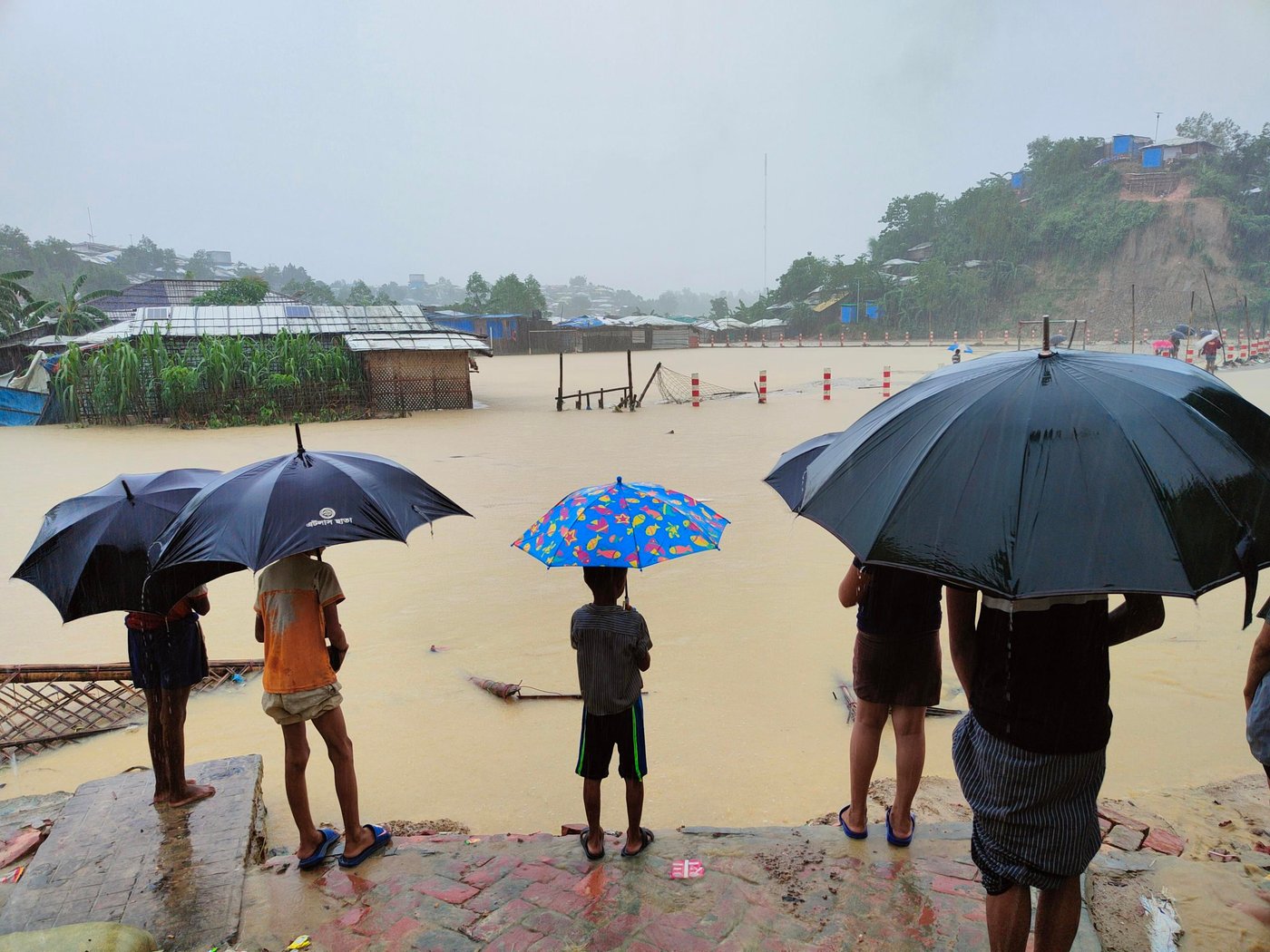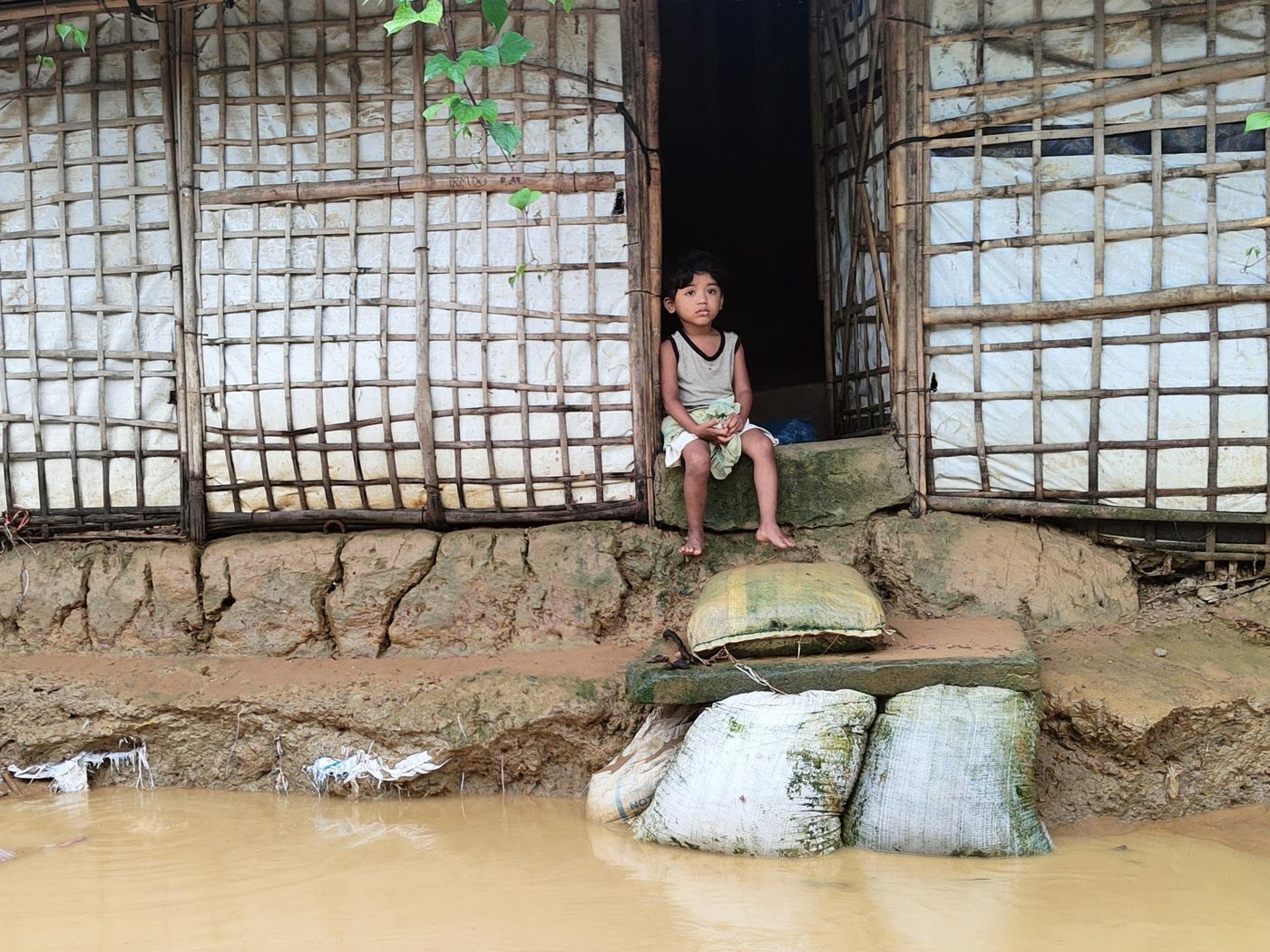DONATE NOW – and support our emergency response
Since escaping genocide in Rakhine, almost 900,000 Rohingya refugees have been settled by the Bangladesh government in camps located in Teknaf and Ukhiya, sub-districts of Cox’s Bazar. These camps – spanning an area of about 26 square kilometres – are not just the largest in the world, they are also some of the most congested.
This makes things even more challenging at a time of escalating need. Rolling lockdowns due to rising Covid-19 cases have impeded access to many humanitarian programmes, curtailed protection monitoring, and hindered maintenance efforts for almost a year.
During this time, multiple fires have broken out, including the one that ravaged Balukhali camp in March, killing 15 refugees and displacing 48,000. Monsoons are tough on the camps to begin with, but for refugees in Cox’s Bazar, this year is particularly hard.
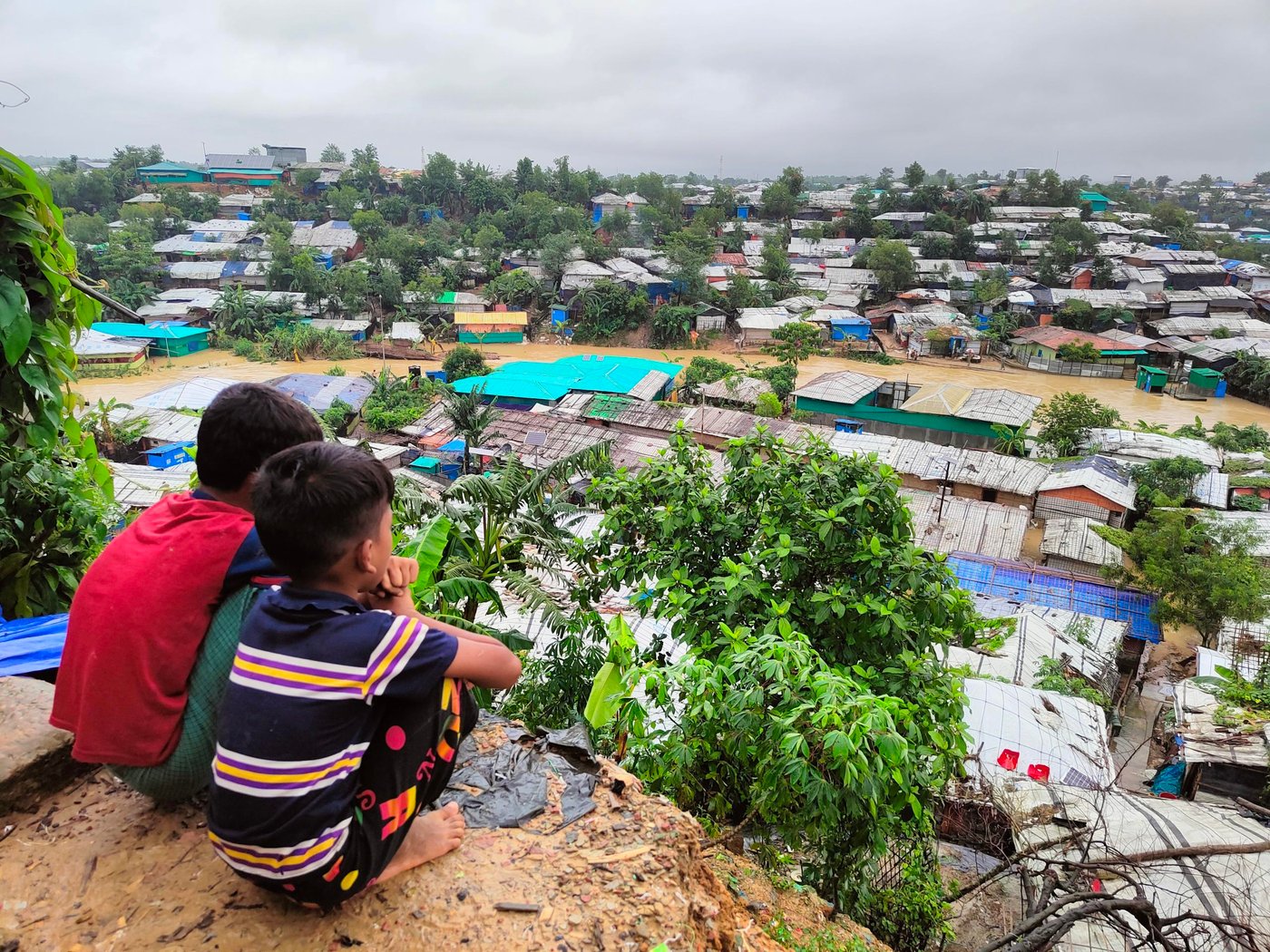
During the monsoon season each summer, it rains almost every day, battering the temporary bamboo and tarpaulin shelters and causing untold suffering for refugees.

Shelters flood, roads disappear under the deluge, and camps are cut off from each other as well as from vital humanitarian aid. All too often, the ground itself gives way.
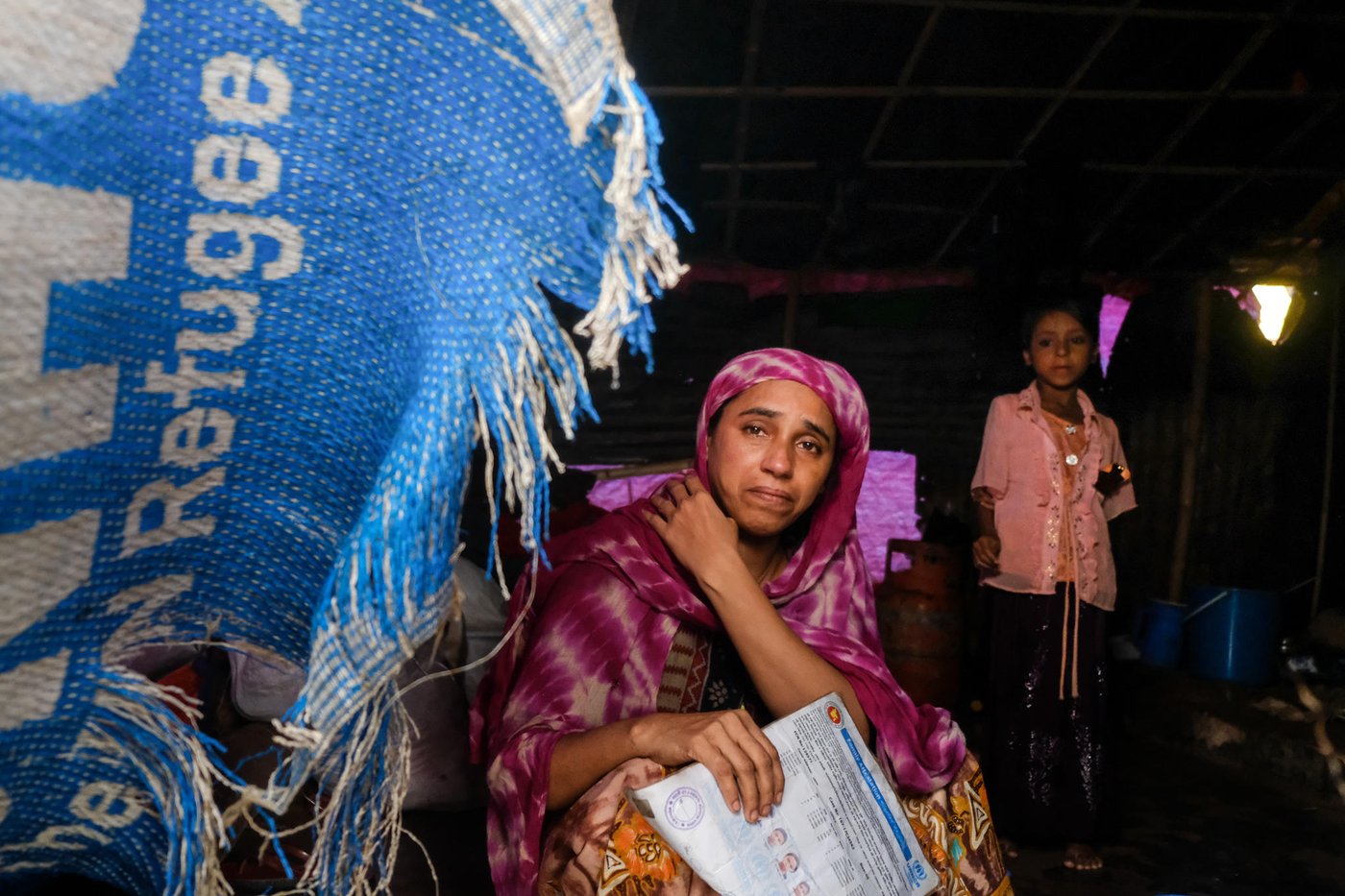
Hamida, a single mother of four, lost her husband in the 2017 genocide. Hamida lives in Balukhali camp in Cox’s Bazar, where the fire displaced many of her neighbours and destroyed their shelters.
The rain routinely floods her shelter, threatening to contaminate food and drinking water, and damaging important documents. As her shelter is slowly destroyed, Hamida cannot leave, as she has nowhere else to turn.
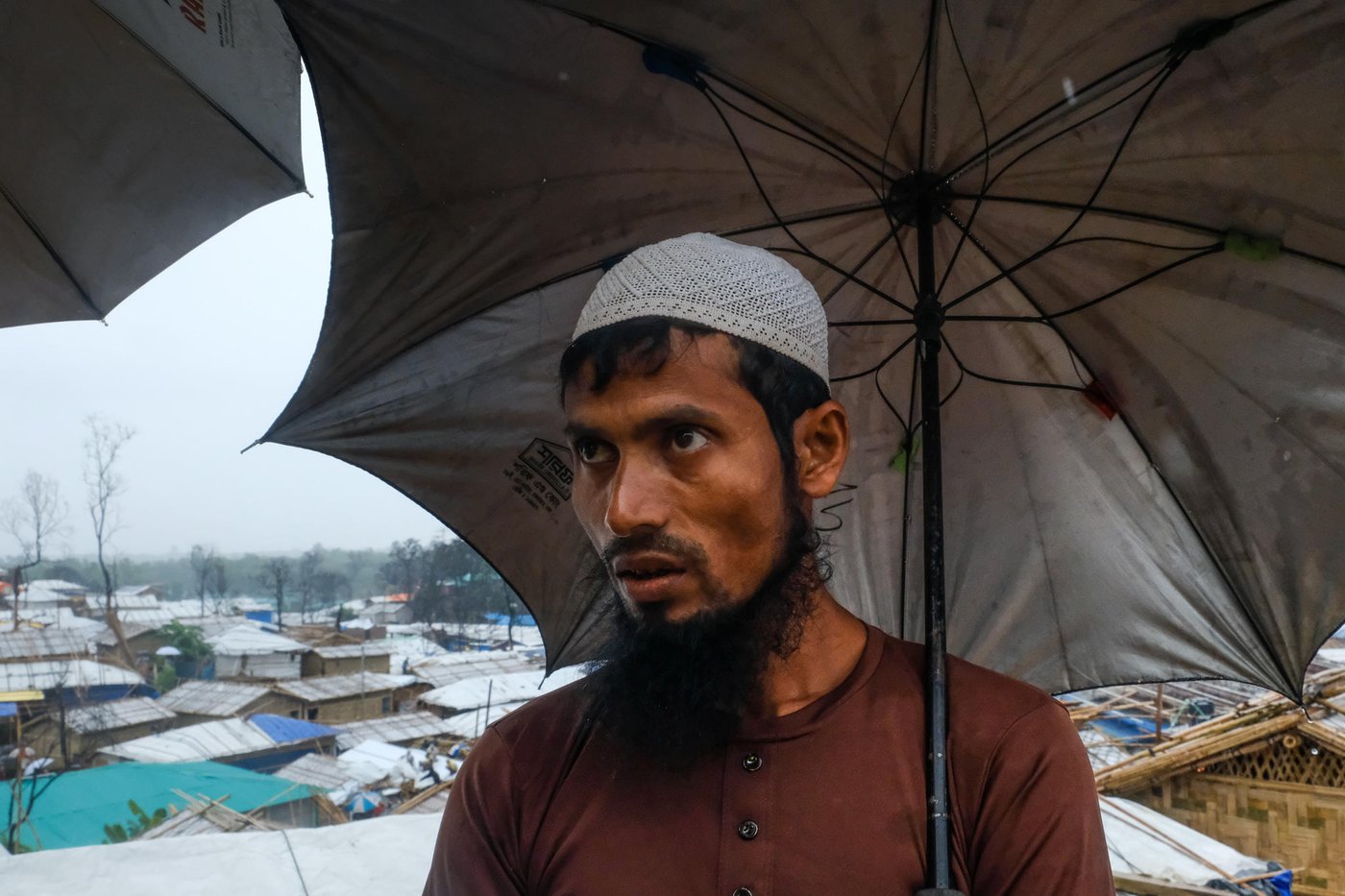
Korim lost his World Food Programme (WFP) card in the recent fires. Without this he cannot access food items for his family of four.
With help from the Norwegian Refugee Council’s (NRC) Information, Counselling and Legal Assistance (ICLA) team, Korim has managed to reapply. But the challenges keep coming. Now, with the monsoons, his temporary shelter is on the brink of collapse.
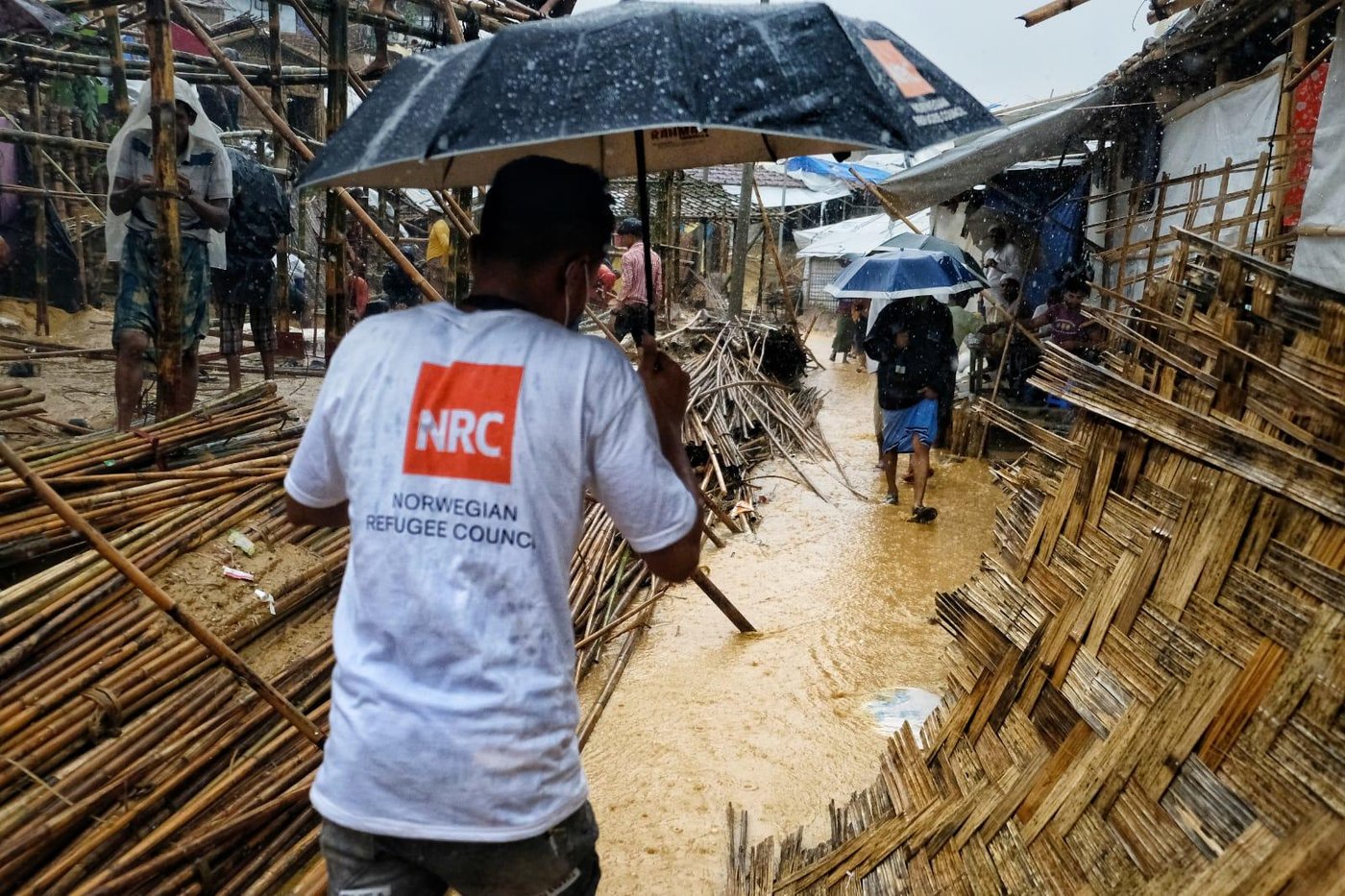
Most recently, on 27 July, relentless rain caused massive flooding across the Cox’s Bazar coast, submerging the refugee camps in Teknaf and Ukhiya.
Right now, NRC teams are on the ground, but it looks like this will be a long week for refugees and the host community in Cox's Bazar. The rains are projected to continue for the next few days, and we are already receiving reports of landslides, shelter damage, injuries, and deaths.
DONATE NOW – and support our emergency response
The recent floods underscore, yet again, the need for immediate attention and collaborative action.
